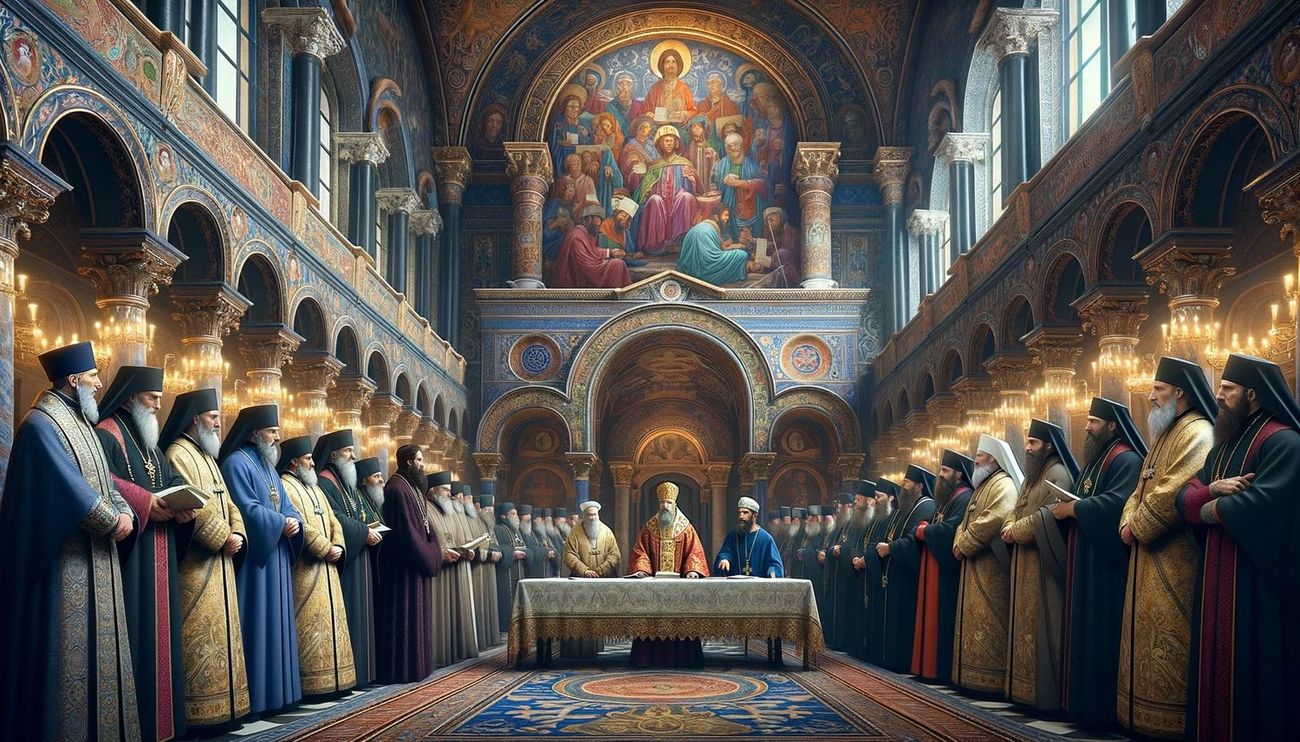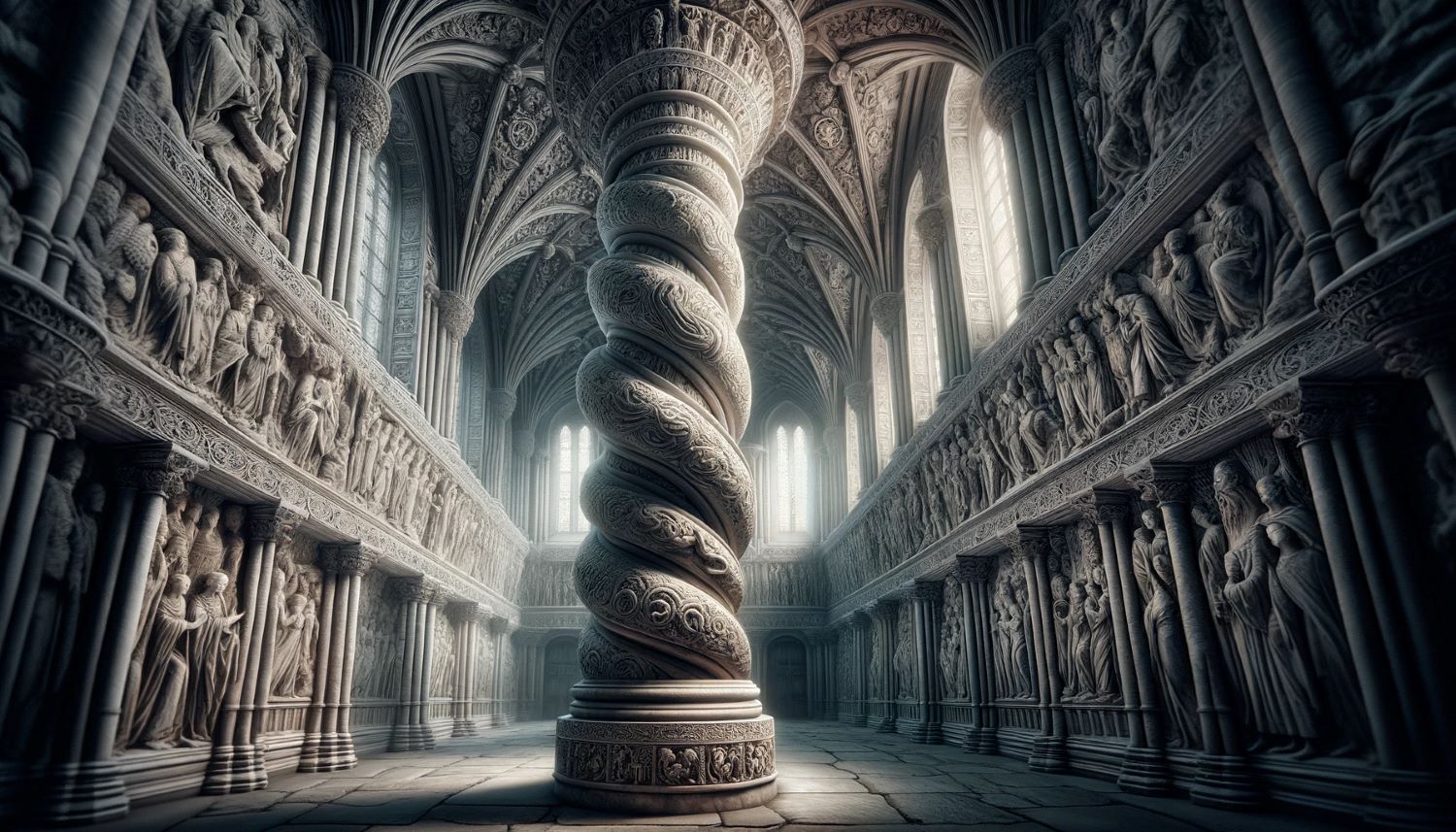Home>Arts and Culture>Why Did Calvary Chapel Split


Arts and Culture
Why Did Calvary Chapel Split
Published: March 4, 2024
Peter Smith, Editorial Director at Christian.net, combines deep insights into faith, politics, and culture to lead content creation that resonates widely. Awarded for his contributions to religious discourse, he previously headed a major organization for religious communicators, enhancing dialogue on faith's societal impacts.
Discover the reasons behind the split of Calvary Chapel and its impact on the arts and culture community. Explore the dynamics and implications of this significant event.
(Many of the links in this article redirect to a specific reviewed product. Your purchase of these products through affiliate links helps to generate commission for Christian.net, at no extra cost. Learn more)
Table of Contents
The Origins of Calvary Chapel
-
The Jesus Movement: Calvary Chapel was birthed during the Jesus Movement of the late 1960s and early 1970s. This movement saw a surge of young people turning to Christianity, seeking a more personal and experiential faith.
-
Chuck Smith: The founder of Calvary Chapel, Pastor Chuck Smith, played a pivotal role in the church's origins. His emphasis on teaching the Bible verse by verse and his open-door policy for all, regardless of their background, attracted many to Calvary Chapel.
-
The Birth of a Movement: Calvary Chapel's commitment to contemporary worship, informal style, and focus on reaching out to the youth set it apart from traditional churches. This unique approach led to the rapid growth of the church and the birth of a movement that would influence countless other churches.
-
The Calvary Chapel Distinctives: The early days of Calvary Chapel were marked by a strong emphasis on the teaching of the Word, the work of the Holy Spirit, and the practice of love and unity among believers. These distinctives became foundational to the identity of Calvary Chapel and its subsequent growth and influence.
Read more: What Happened To Calvary Chapel
The Leadership Conflict
-
Chuck Smith's Leadership: Chuck Smith's leadership was central to the identity and growth of Calvary Chapel. His visionary approach and emphasis on teaching the Bible verse by verse endeared him to many. However, as the movement expanded, the question of succession and leadership transition became increasingly pressing.
-
Leadership Succession: The issue of who would succeed Chuck Smith as the leader of Calvary Chapel became a point of contention. Different leaders within the movement had varying perspectives on how this transition should occur, leading to disagreements and tensions.
-
Centralization of Power: Some leaders within Calvary Chapel sought a more centralized structure of leadership, while others advocated for a more decentralized approach. This difference in opinion regarding the distribution of power and authority within the church hierarchy contributed to the leadership conflict.
-
Personalities and Egos: As with any organization, personal dynamics and individual egos played a role in the leadership conflict. The strong personalities and differing leadership styles of key figures within Calvary Chapel added fuel to the fire, exacerbating the tensions and disagreements.
-
Impact on Unity: The leadership conflict had a significant impact on the unity of Calvary Chapel. It led to divisions and factions within the movement, as differing visions for the future direction of the church emerged. This internal discord ultimately culminated in the split that affected Calvary Chapel.
-
Legacy of Chuck Smith: The legacy of Chuck Smith, while revered by many, also became a point of contention in the leadership conflict. Differing interpretations of his vision and the direction he intended for Calvary Chapel further fueled the disagreements among leaders within the movement.
-
The Aftermath: The leadership conflict and its eventual resolution, or lack thereof, had a lasting impact on the trajectory of Calvary Chapel. It shaped the subsequent developments within the movement and influenced the direction of the various branches that emerged from the split.
The Doctrinal Disagreements
-
Interpretation of Scripture: One of the primary doctrinal disagreements that arose within Calvary Chapel revolved around the interpretation of certain biblical passages and theological concepts. Different leaders and factions within the movement held divergent views on issues such as eschatology, spiritual gifts, and ecclesiology, leading to doctrinal tensions and disagreements.
-
The Charismatic Movement: The Charismatic Movement, with its emphasis on spiritual gifts, speaking in tongues, and divine healing, became a point of contention within Calvary Chapel. While some leaders embraced charismatic practices, others held more cautious or cessationist views, leading to doctrinal divisions and debates.
-
Calvinism vs. Arminianism: The age-old theological debate between Calvinism and Arminianism also played a role in the doctrinal disagreements within Calvary Chapel. Varying perspectives on predestination, free will, and the nature of salvation contributed to theological tensions and differing doctrinal emphases among leaders and members.
-
Worship and Church Practices: Differences in worship styles, church governance, and the role of tradition within the church also fueled doctrinal disagreements. Some factions within Calvary Chapel advocated for a more traditional approach to worship and church structure, while others sought a more contemporary and informal expression of faith.
-
Theological Emphases: The emphasis on certain theological doctrines and teachings varied among different leaders and branches within Calvary Chapel. This led to doctrinal disagreements regarding the prioritization of specific theological emphases, such as the sovereignty of God, the nature of the church, and the role of the Holy Spirit in the life of believers.
-
Impact on Unity and Identity: The doctrinal disagreements within Calvary Chapel had a profound impact on the unity and identity of the movement. They led to internal divisions, the formation of separate fellowships, and differing theological emphases among the various branches that emerged from the doctrinal disputes.
-
Navigating Diversity: The challenge of navigating doctrinal diversity while maintaining a sense of unity and shared purpose became a central issue for Calvary Chapel. The movement grappled with how to embrace theological diversity without compromising its core identity and foundational beliefs, leading to ongoing tensions and debates regarding doctrinal boundaries and theological inclusivity.
The Role of Personalities
-
Influence on Leadership Styles: The diverse personalities of key leaders within Calvary Chapel significantly impacted the movement's trajectory. Different leadership styles, approaches to decision-making, and interpersonal dynamics shaped the internal dynamics of the church and contributed to the eventual split.
-
Clashes of Vision: Personalities clashed as leaders with strong convictions and distinct visions for the future of Calvary Chapel found themselves at odds. The clash of personalities and competing leadership styles created friction and discord within the movement, ultimately influencing the direction of the split.
-
Egos and Power Dynamics: Personal egos and power dynamics played a pivotal role in the internal conflicts within Calvary Chapel. As influential figures within the movement vied for control and influence, personal ambitions and power struggles further exacerbated the tensions and divisions that led to the split.
-
Impact on Unity: The clash of personalities and the resulting power struggles had a profound impact on the unity of Calvary Chapel. The inability to reconcile differing personalities and leadership approaches contributed to a fractured sense of unity within the movement, ultimately leading to the division that affected Calvary Chapel.
-
Legacy and Influence: The legacies of influential personalities within Calvary Chapel continued to shape the movement even after the split. The impact of their leadership, teachings, and personal convictions reverberated through the various branches that emerged, influencing the ongoing developments within the Calvary Chapel community.
-
Navigating Personal Differences: The challenge of navigating personal differences and reconciling conflicting personalities became a central issue for Calvary Chapel. The movement grappled with how to honor the diverse contributions of its leaders while addressing the interpersonal conflicts that arose, seeking to find a path forward amidst the complexities of human relationships and individual personalities.
-
Lessons Learned: The role of personalities in the split of Calvary Chapel serves as a reminder of the profound impact that individual leaders and their personal dynamics can have on a religious movement. It underscores the importance of addressing interpersonal conflicts, fostering healthy leadership dynamics, and prioritizing unity amidst diversity of personalities and leadership styles.
The Impact on the Calvary Chapel Movement
-
Fragmentation of the Community: The split within Calvary Chapel resulted in the fragmentation of the once-unified community. Different factions and branches emerged, each with its own distinct identity and leadership, leading to a sense of disunity and division within the broader Calvary Chapel movement.
-
Diversity of Practices and Emphases: The impact of the split was reflected in the diversity of practices, doctrinal emphases, and worship styles among the various branches of Calvary Chapel. This diversity, while reflective of the autonomy and individuality of each fellowship, also underscored the challenges of maintaining a cohesive identity and shared mission across the fragmented movement.
-
Influence on Leadership and Governance: The split had a profound impact on the leadership and governance structures within Calvary Chapel. Different branches adopted varying approaches to leadership succession, church governance, and decision-making processes, reflecting the divergent paths taken by the separate fellowships that emerged from the split.
-
Theological and Philosophical Shifts: The split led to theological and philosophical shifts within the Calvary Chapel movement. Different branches emphasized distinct theological doctrines, worship practices, and ministry emphases, reflecting the diverse trajectories taken by the separate fellowships as they sought to establish their unique identities and visions for the future.
-
Challenges of Reconciliation and Healing: The impact of the split presented significant challenges in terms of reconciliation and healing within the Calvary Chapel community. Efforts to mend the divisions, reconcile differing perspectives, and foster a sense of unity amidst diversity became central concerns for the movement as it sought to navigate the aftermath of the split.
-
Legacy and Continuity: The split left a lasting legacy on the Calvary Chapel movement, shaping its subsequent developments and influencing the ongoing trajectory of the various branches that emerged. The impact of the split continued to reverberate through the community, underscoring the enduring effects of the internal divisions and the challenges of maintaining a cohesive movement amidst diversity and fragmentation.
-
Adaptation and Evolution: The impact of the split prompted a process of adaptation and evolution within the Calvary Chapel movement. Different branches navigated the challenges of establishing their unique identities, addressing internal conflicts, and adapting to the changing landscape of the broader evangelical community, reflecting the ongoing transformation and diversification of the movement.
-
Lessons Learned and Future Directions: The impact of the split served as a catalyst for reflection, learning, and discernment within the Calvary Chapel movement. It prompted a reevaluation of leadership dynamics, doctrinal boundaries, and the pursuit of unity amidst diversity, shaping the future directions and priorities of the various branches as they sought to learn from the challenges of the past and chart a course for the future.















